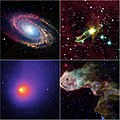Lêer:Ssc2003-06k 250.jpg

Grootte van hierdie voorskou: 599 × 600 piksels. Ander resolusies: 240 × 240 piksels | 627 × 628 piksels.
Oorspronklike lêer (627 × 628 piksels, lêergrootte: 97 KG, MIME-tipe: image/jpeg)
Lêergeskiedenis
Klik op die datum/tyd om te sien hoe die lêer destyds gelyk het.
| Datum/Tyd | Duimnael | Dimensies | Gebruiker | Opmerking | |
|---|---|---|---|---|---|
| huidig | 22:06, 17 Januarie 2007 |  | 627 × 628 (97 KG) | Siebrand | {{Information |Description=<table border="1"> <tr><td>Image ID: ssc2003-06k</td><td>Release date: en:December 19, en:2003</td></tr> <tr><td colspan="2">Source: [http://www.spitzer.caltech.edu/Media/releases/ssc2003-06/ssc2003-06k.shtml Spitzer n |
Lêergebruik
Die volgende bladsy gebruik dié lêer:
Globale lêergebruik
Die volgende ander wiki's gebruik hierdie lêer:
- Gebruik in cs.wikipedia.org
- Gebruik in fa.wikipedia.org
- Gebruik in fr.wikipedia.org
- Gebruik in id.wikipedia.org
- Gebruik in ko.wikipedia.org
- Gebruik in lb.wikipedia.org
- Gebruik in nl.wikipedia.org
- Gebruik in ru.wikipedia.org
- Gebruik in sk.wikipedia.org

